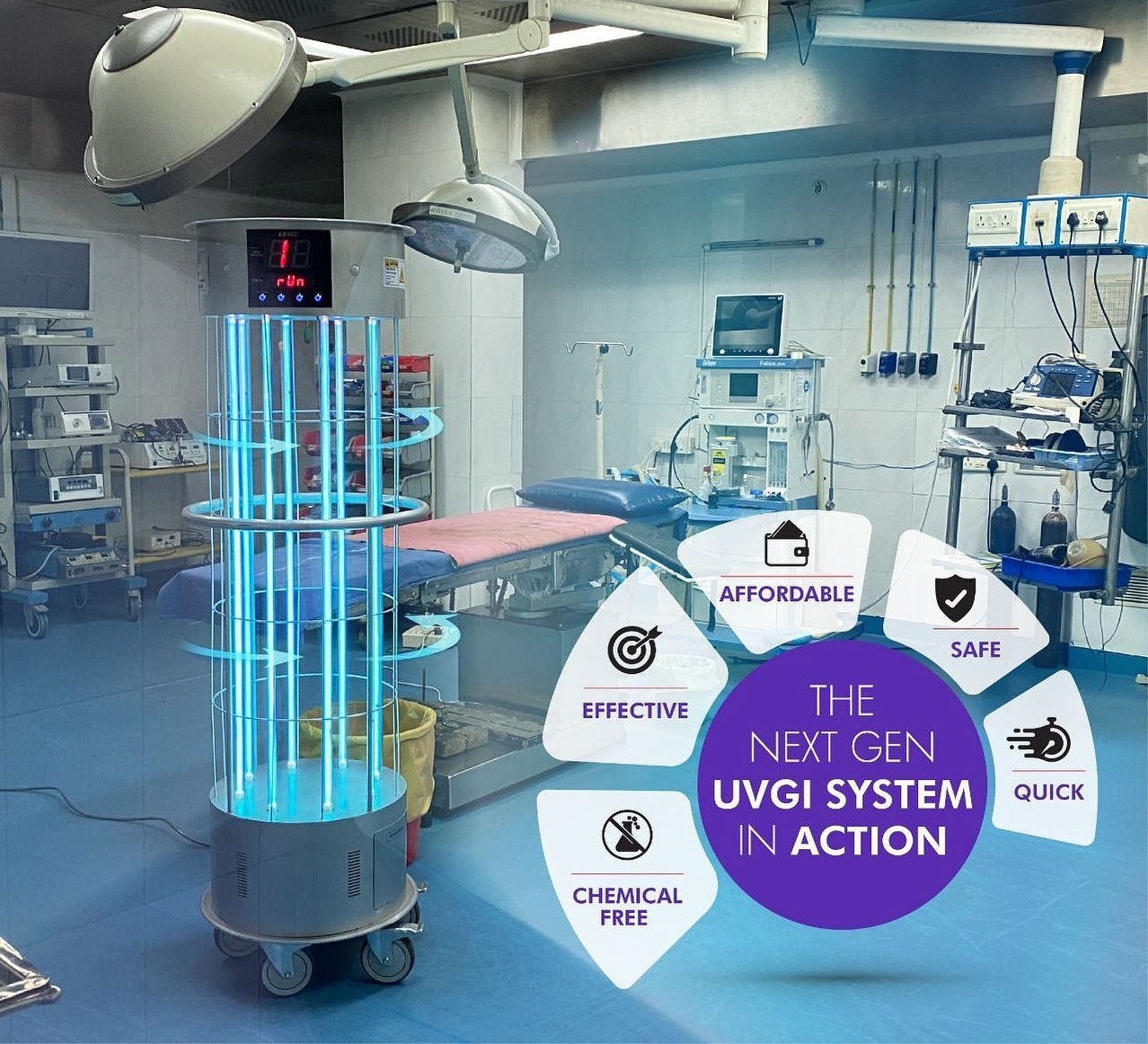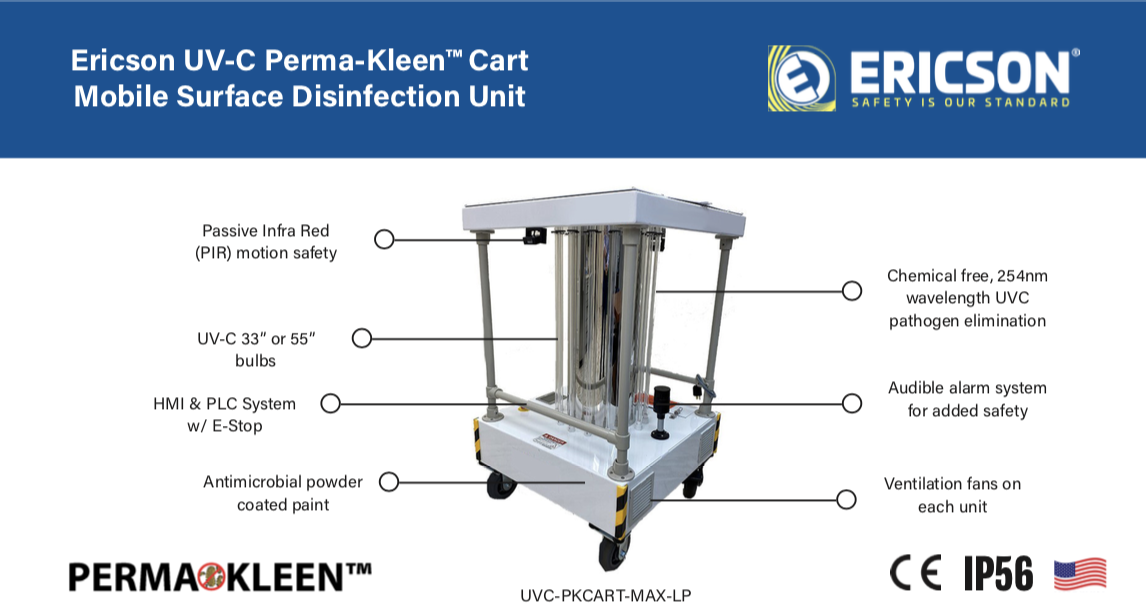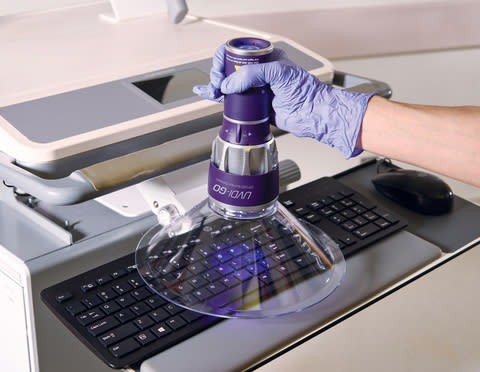UV Surface Disinfection Demystified: Comprehending the Scientific Research Behind the Solution
UV Surface Disinfection Demystified: Comprehending the Scientific Research Behind the Solution
Blog Article
UV Disinfection: The Cutting-Edge Modern Technology Changing Sanitation Practices
In the realm of cleanliness methods, one modern technology has actually become a game-changer: UV sanitation. With its capacity to eradicate unsafe pathogens, this cutting-edge innovation is changing the way we come close to tidiness and hygiene. Just how does UV disinfection work, and what are the advantages it uses? From health care settings to food handling, UV disinfection is making its mark in various sectors. In this discussion, we will discover the details of this transformative modern technology and look in advance to its promising future.
Just How UV Disinfection Functions
UV sanitation functions by using ultraviolet light to ruin or inactivate bacteria, providing a chemical-free and highly effective technique of sanitation. This modern technology uses the power of short-wavelength UV-C light, which is qualified of damaging the DNA and RNA of microbes, thus rendering them unable to create and replicate injury.
The process starts with the installation of UV disinfection systems, which contain UV lamps that emit UV-C light. These lights are strategically put in locations where microbial contamination is a concern, such as water treatment plants, hospitals, labs, and food handling facilities.
When bacteria are revealed to UV-C light, the photons penetrate their cell wall surfaces and reach the DNA and RNA within. The high-energy UV-C photons interfere with the genetic product by creating bonds between surrounding nucleotides, bring about the formation of thymine dimers. These dimers stop the microbes from duplicating, providing them safe.
UV disinfection is very efficient versus a large range of microbes, including viruses, bacteria, and bloodsuckers. It is particularly effective against waterborne virus like E. coli, Giardia, and Cryptosporidium. In addition, UV disinfection is a chemical-free method, getting rid of the requirement for possibly unsafe disinfectants and decreasing the danger of dangerous disinfection byproducts.
Benefits of UV Sanitation
UV sanitation provides countless benefits in the area of cleanliness, making it a highly liked method for properly getting rid of hazardous microorganisms. Unlike standard disinfection techniques that rely on chemicals, UV sanitation uses ultraviolet light to ruin the DNA of microorganisms, making them unable to replicate and cause infections.

UV disinfection is likewise extremely versatile in its applications. It can be made use of in numerous setups, consisting of medical facilities, institutions, food handling facilities, and water treatment plants. UV disinfection systems can be quickly integrated into existing cleanliness methods, supplying an added layer of protection against contagious illness.
In addition to its effectiveness and flexibility, UV sanitation is additionally eco pleasant. It does not create any type of damaging results or residues, making it a sustainable and risk-free method for cleanliness - uv surface disinfection. Moreover, UV sanitation requires marginal upkeep and has a lengthy life-span, causing cost financial savings over time.
UV Sanitation in Medical Care Setups
In health care setups, UV disinfection has actually arised as an innovative approach for efficiently getting rid of unsafe microbes. UV sanitation functions by producing ultraviolet light at a specific wavelength that is dangerous to microorganisms, viruses, and various other bacteria.
First of all, UV disinfection is a non-chemical technique, making it an eco-friendly alternative compared to conventional sanitation methods that commonly involve using extreme chemicals. Using UV light eliminates the requirement for chemical anti-bacterials, lowering the risk of dangerous deposit or chemical exposure to both individuals and healthcare workers.
In addition, UV disinfection is extremely reliable in killing a vast array of microorganisms, consisting of drug-resistant microorganisms such as MRSA and C. difficile. It provides a trusted and regular sanitation procedure, making sure that all surfaces and devices are extensively sanitized, also in hard-to-reach areas.

UV Sanitation in Food Processing
The application of UV disinfection expands beyond medical care settings and finds considerable worth in the realm of food processing. uv surface disinfection. UV sanitation innovation is becoming significantly prominent in the food industry as a result of its capacity to successfully get rid of hazardous pathogens and improve food safety
One of the primary advantages of UV disinfection in food processing is its capability to target a wide variety of microorganisms, including infections, molds, and microorganisms. By making use of UV light at visit this website details wavelengths, it is possible to interfere with the DNA and RNA of these microorganisms, making them unable to trigger or replicate damage. This modern technology can be applied to various stages of the food processing chain, including surface sanitation, equipment sterilization, and water therapy.
UV sanitation gives a chemical-free and non-thermal method of disinfecting foodstuff. Unlike standard sanitation approaches that count on chemicals or heat, UV technology does not leave any kind of deposit or alter the preference, appearance, or nutritional value of the food. This makes it an excellent service for sectors that need strict adherence to quality criteria.
Additionally, UV disinfection systems are very easy to set up and run, needing minimal maintenance. They can be incorporated right into existing processing lines without creating considerable interruptions to the manufacturing process. In addition, UV systems have a quick therapy time, enabling continuous handling and decreasing downtime.
The Future of UV Sanitation

One area where UV disinfection is expected to make considerable advancements is in the field of healthcare. With the surge of antibiotic-resistant microorganisms and the need for much more efficient disinfection techniques, UV light has the prospective to play a crucial role in decreasing healthcare-associated infections. UV disinfection systems can be used to decontaminate surfaces, equipment, and even the air in healthcare centers, helping to avoid the spread of damaging microorganisms and enhance individual safety and security.
One more market that might gain from improvements in UV sanitation innovation is the food market. UV light has already proven to be an effective technique for decontaminating food products and decreasing the risk of foodborne illnesses. As technology boosts, we can anticipate to see extra cost-efficient and efficient UV disinfection systems being executed in food handling plants, guaranteeing that the food we consume is secure and without unsafe germs.
Final Thought
In conclusion, UV disinfection is a cutting-edge modern technology that is changing hygiene methods in healthcare setups and food processing. By utilizing UV light to kill or shut down microorganisms, it supplies many benefits such as security, effectiveness, and effectiveness. With recurring improvements in this area, UV sanitation holds terrific potential for the future of cleanliness, i loved this providing a reliable and lasting remedy for maintaining tidy and hygienic atmospheres.
UV disinfection is a chemical-free technique, removing the requirement for potentially dangerous disinfectants and lowering the risk of unsafe sanitation by-products.
Unlike typical disinfection methods that rely on chemicals, UV sanitation makes use of ultraviolet light to ruin the DNA of microbes, providing them not able to duplicate and create infections. Unlike standard disinfection methods that count on chemicals or warmth, UV modern technology does not leave any kind of residue look at this website or alter the preference, structure, or nutritional value of the food. As technology enhances, we can anticipate to see a lot more effective and cost-efficient UV disinfection systems being executed in food handling plants, ensuring that the food we consume is safe and free from damaging microorganisms.
In verdict, UV sanitation is a sophisticated technology that is transforming sanitation techniques in healthcare settings and food handling.
Report this page